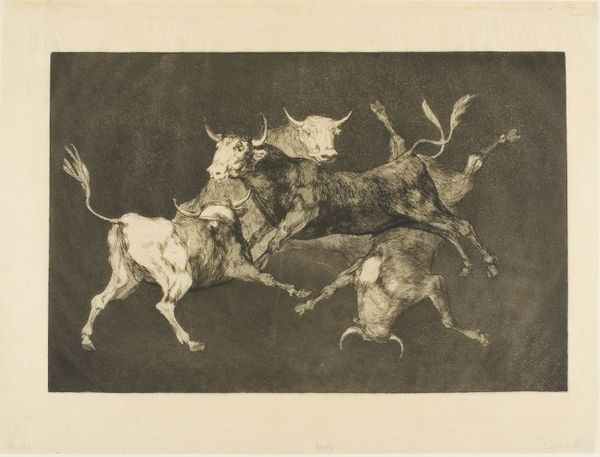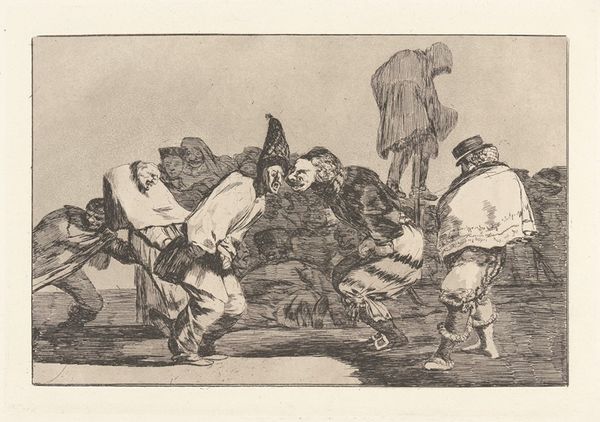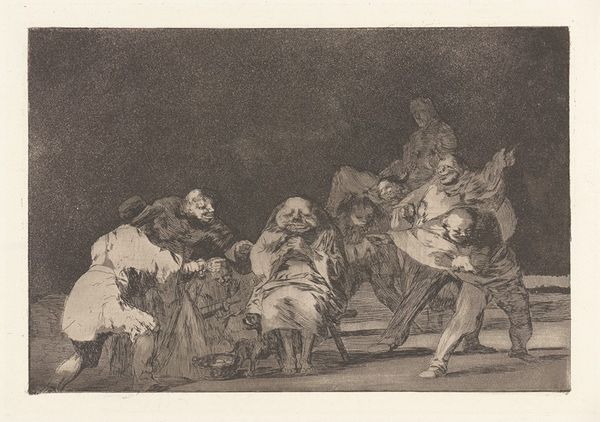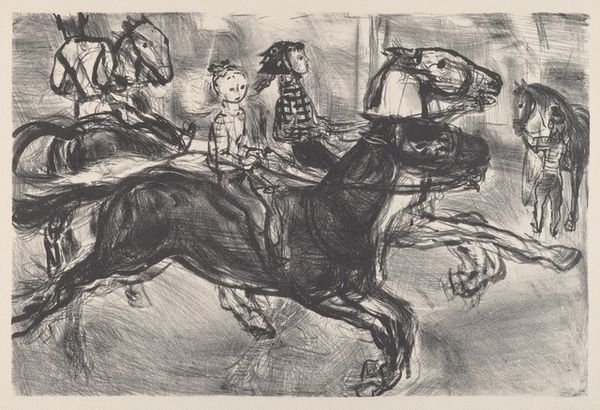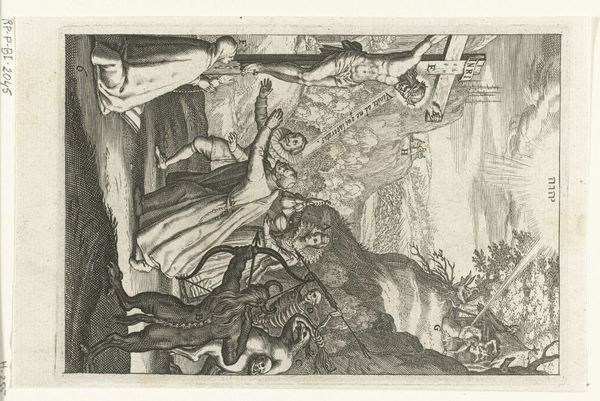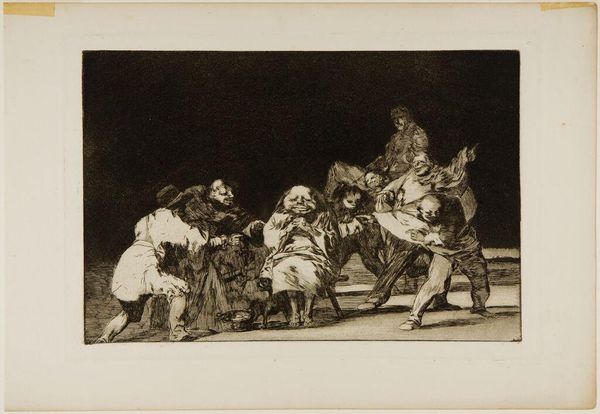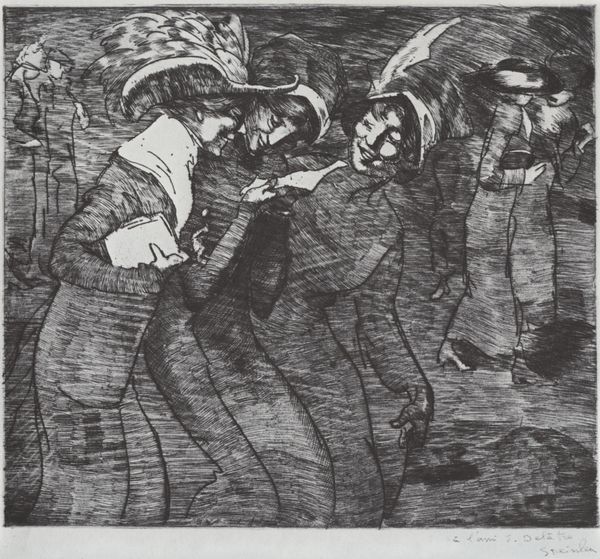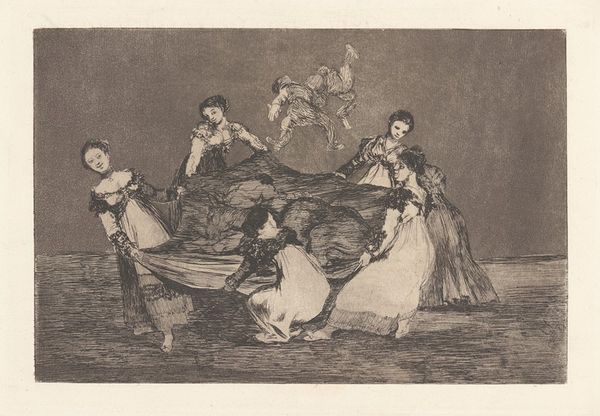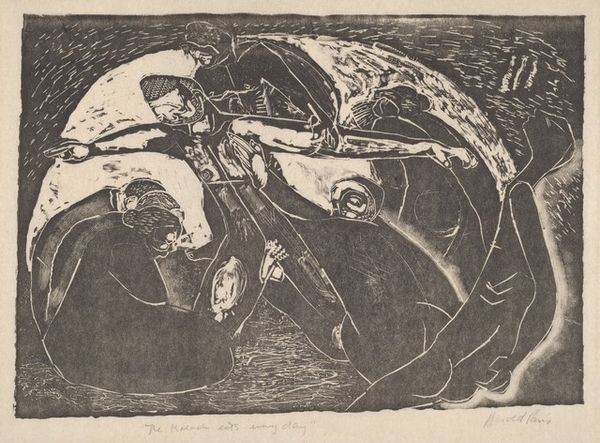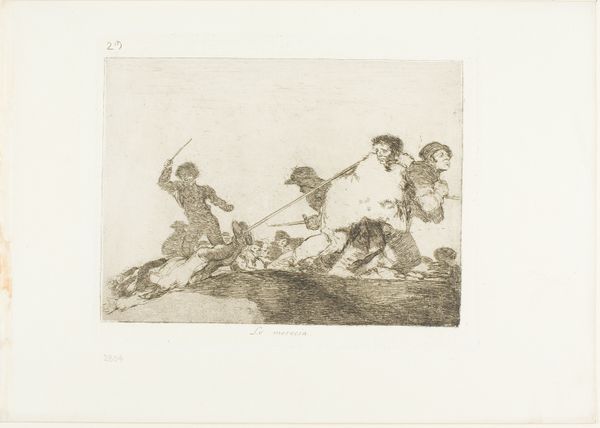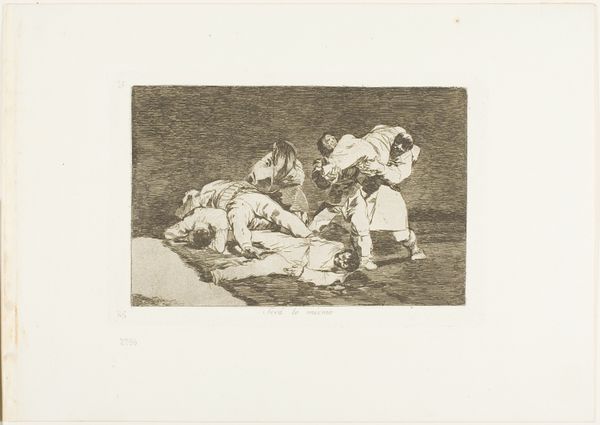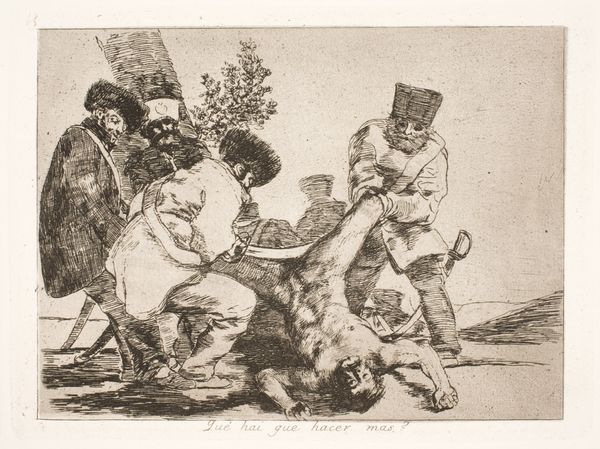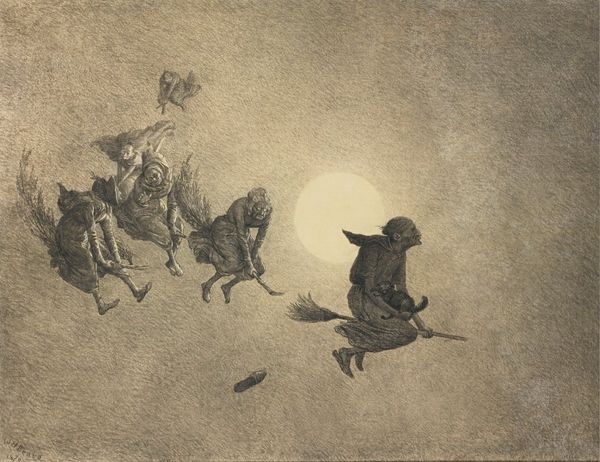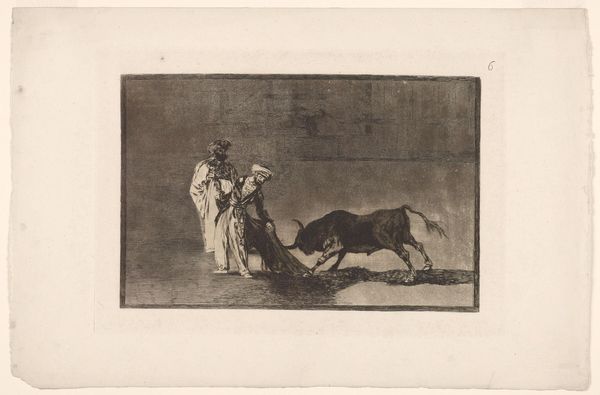![To Go amongst the Branches, i.e. To Talk through One’s Hat [Ridiculous Folly] by Francisco de Goya](/_next/image?url=https%3A%2F%2Fd2w8kbdekdi1gv.cloudfront.net%2FeyJidWNrZXQiOiAiYXJ0ZXJhLWltYWdlcy1idWNrZXQiLCAia2V5IjogImFydHdvcmtzLzAxMDA2Zjc2LWZjNmEtNDcxZi1hMzQxLTcwYTIyZmIyZGQxYi8wMTAwNmY3Ni1mYzZhLTQ3MWYtYTM0MS03MGEyMmZiMmRkMWJfZnVsbC5qcGciLCAiZWRpdHMiOiB7InJlc2l6ZSI6IHsid2lkdGgiOiAxOTIwLCAiaGVpZ2h0IjogMTkyMCwgImZpdCI6ICJpbnNpZGUifX19&w=1920&q=75)
To Go amongst the Branches, i.e. To Talk through One’s Hat [Ridiculous Folly] c. 1813 - 1820
0:00
0:00
print, etching
#
narrative-art
# print
#
etching
#
caricature
#
figuration
#
romanticism
Copyright: Public Domain: Artvee
Editor: This etching, "To Go amongst the Branches, i.e. To Talk through One’s Hat," by Goya, created sometime between 1813 and 1820, has a strange quality. There are so many figures perched on the branches of a stark tree. What draws your eye when you look at this print? Curator: The biting, acid-etched lines used to create this image speak volumes about Goya’s perspective on societal folly. Consider the *process* of etching – the deliberate and corrosive action mirrors the artist's critique of those “talking through their hats." Editor: I see that! So the *means* of production, in a way, becomes part of the *message* of ridiculousness? Curator: Precisely! The materiality of the print - the paper itself, the ink used – connects to broader questions of print culture and its role in disseminating critiques of power. These were not paintings for wealthy patrons, but multiples, accessible to a wider, if still limited, audience. How does the monochrome palette contribute to this reading? Editor: It almost simplifies, making everyone and everything…equally absurd? There are no rich colors to distract from the message, perhaps. It’s quite stark. Curator: Indeed. Think about the availability and cost of pigments at the time. This monochrome isn't necessarily a limitation; it’s a deliberate choice, furthering a sharp, focused attack. Editor: That makes a lot of sense. I hadn’t considered how much the materials themselves underscore the message of the artwork. It highlights the economic factors and distribution strategies that allowed Goya to express that perspective so widely, I think. Curator: Precisely! And examining these aspects takes us beyond simply admiring the aesthetic quality.
Comments
No comments
Be the first to comment and join the conversation on the ultimate creative platform.
